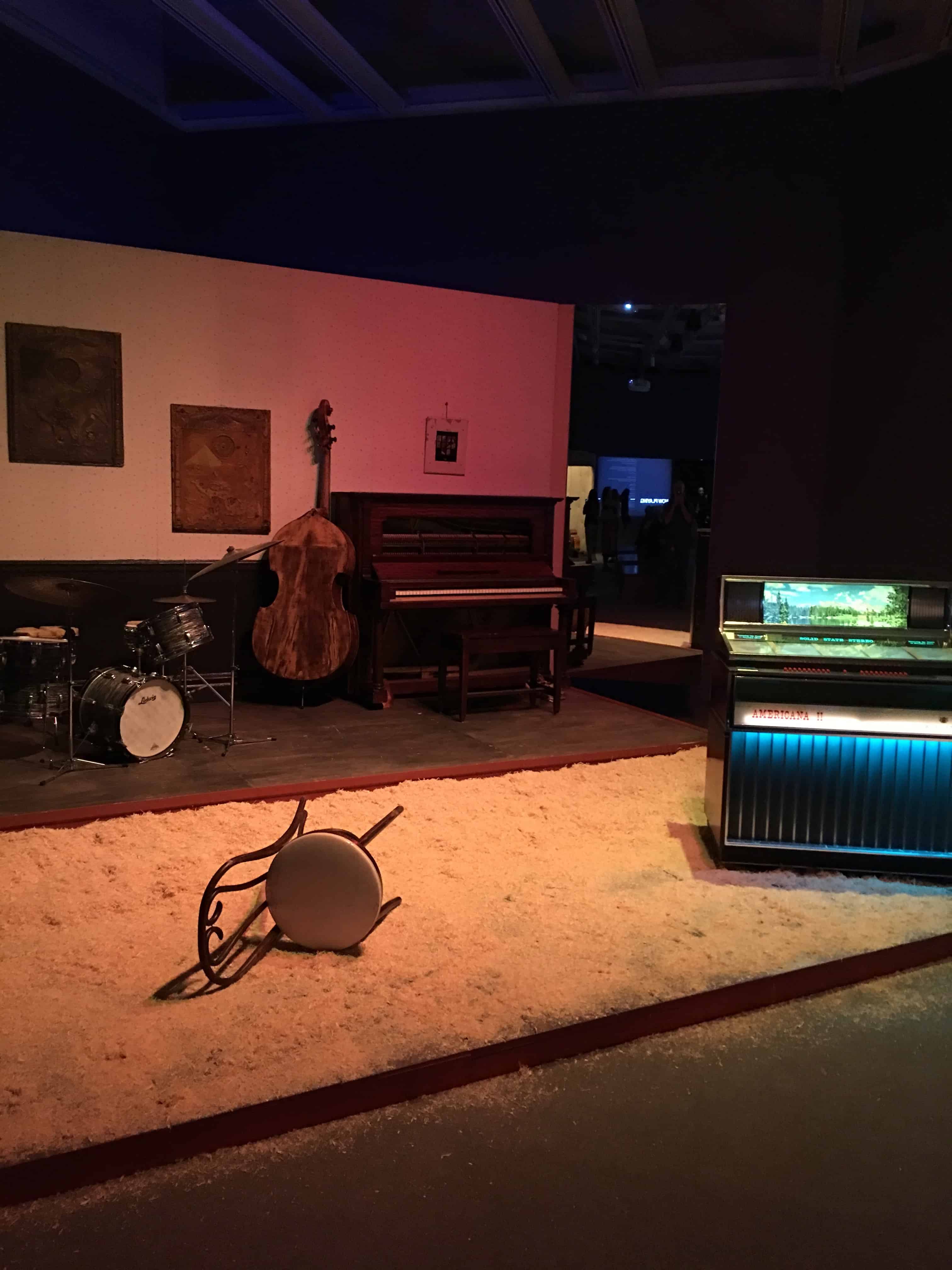Jason Moran is at the Whitney, and it doesn’t seem right.
Not that he doesn’t deserve such an honor, nor that jazz should not be recognized by our important institutions – Moran should be celebrated as widely as Bob Dylan or Beyoncé, and jazz should be at the forefront of American culture, every day of the week, all year round. So a great American musician given a show at a museum for great American art should be a natural fit, a site for the realization of meaning in the branding and synergy that administrators and marketing people chase like cats following a laser pointer along a wall.
But Moran is a musician, the Whitney a museum, the alchemy between the two as tricky to pull off us, well, alchemy. The Whitney has shown it can be done, they did it with their exhibit devoted to the late, great free jazz pianist Cecil Taylor. That show collected and displayed archives, in terms of objects like photographs, scores, Taylor’s writing, and used those to inform a series of performances. It was like going to the symphony, reading in the program book about the composers and the music, and with that context enjoying the performance that much more.
But that is not how the Jason Moran, JASON MORAN show is organized or presented. There is a schedule of performances slated that should excite any jazz fan and that promise to be some of the best jazz shows of the fall. As music, those just need a bandstand and space for the audience, that is they can happen at the Village Vanguard, or Zankel Hall, or Roulette, they don’t require a museum exhibit. And as an exhibit, Jason Moran is disappointing, it feels like a gift the Whitney has given to the pianist, full of specific, personal satisfactions and insider-ish details, but as something for the public it is thin, small, and feels more like polite salesmanship than a display of insight and revelation.
As Moran and curator Adrienne Edwards described at a press preview, the installation STAGED (the main work in the exhibition) represented stages, places where musicians were on the bandstand in front of audiences. Those were carved out of three spots in the single main room, three discrete sites representing the Savoy Ballroom (Savoy Ballroom 1), the Three Deuces (Three Deuces), and Slugs’ Saloon (Slugs’ Saloon).
Those are three famous jazz spots, long passed away. Big bands and small groups played there and literally made history. Very little of that history is preserved (none of it in this show), as this was music made in the moment, improvised. Unless a recording had been arranged ahead of time, no one thought of posterity. Details of the music perhaps stuck in the minds and muscle memories of dancers and listeners and musicians, but mostly what remained were the sensations of those nights, musicians trying to recreate them, audiences trying to hunt them down again.
None of that is at the Whitney, but then none of it could be. Those moments only existed in time, and they are lost, as Roy Batty said, like tears in rain. Instead there is a miniature ballroom bandshell, its stage empty, a player baby grand piano, bass, and drum kit standing in for the Three Deuces, and a self-consciously staged depiction of Slugs’, with player piano, jukebox, and overturned chair, as if it had been a rowdy night. (Moran, who was born in 1975, never played any of the rooms.)
The absolute literalness of the titles assumes that the viewer knows what these places meant, but Jason Moran gives very little information to anyone without prior experience with jazz. Music plays in the exhibit; the player piano reproduces Moran’s playing, and there are video and still projections that show bits of his career and musicians who have informed his work. The overall diffidence feels wrong for a museum show and for Moran’s very public-facing music.
The music is all canned, as is an odd and jejune video by Stan Douglas, Luanda-Kinshasa. It depicts an imaginary recording session, circa the era of Miles Davis’s Live-Evil album (1971). A handheld camera glides through a recording studio as a band (featuring Moran, who composed the music) plays a looping, funky vamp. The most interesting part of the whole thing is the care that went into it, all the detailed period hairstyles and clothes, lots of paisley and sideburns, and the tableau vivant of squares at the margins; an engineer in a workman’s jumpsuit, a dude taking still photos, a young woman citing notes or a clipboard. The film stock has the bright, soft colors of the era, the music has none of the hip edge and freedom of Live-Evil, it sounds like a sophisticated suburban dad band, pleased with its own skill but lacking anything more than an idle purpose. It’s not even in the pocket.
There are a few more things; an abstract film loop by Glenn Ligon that might show better in a different context but that seems ornamental here, some manuscript paper examples of Moran’s sketches and notation, a few of his abstract drawings which show nothing other than he’s tried his hand at that craft.
From start to end, the stages are empty. These are spaces for people to gather and partake in the social activity of music making, but at the Whitney there is no one inside them – we stand in the gallery, looking at objects from which we are supposed to keep a proper distance. It’s a museum, after all, and that’s how it works in museums.
The show left the feeling of a wake, a tribute to a dead man and a dead music. Moran, of course, is very much alive – as is jazz, thankfully – and one of his greatest qualities as a musician is compressing time into a single, eternal now. When he plays, the history of jazz (and jazz’ own roots) comes alive and becomes relevant. The meaning of the blues, the sensuousness of stride, the beauty of Brahms Intermezzo Op. 118, No. 2, are revealed as constant and eternal to the human condition.
And that all is the part of the show that will work and is guaranteed to be a hit. Performances began at the end of September, and notable sets include Fay Victor with Darius Jones and Christopher Hoffman, October 19; Oliver Lake on October 25 and 26; and Joanna Brackeen, November 22 and 23 (all in the eighth floor gallery). Moran and Kara Walker will install a steam calliope which they call Katastwôf Karavan, outdoors on October 22. The performances culminate with three straight nights of concerts from Moran’s spectacular trio, The Bandwagon, in the Hess Family Theater (December 19 to 21). Go for the music.
JASON MORAN runs at the Whitney through January 5, 2020.
Recommended discography:
Jason Moran, Modernistic (Blue Note)
Jason Moran, The Bandwagon (Blue Note)
Jason Moran, Artist In Residence (Blue Note)
Jason Moran, Thanksgiving at the Village Vanguard (Yes)
Chick Webb and his Savoy Ballroom Orchestra, The King of Drums (Tax)
Roy Eldridge, Live! At the Three Deuces Club, 1937 (Jazz Archives)
Charles Lloyd, Manhattan Stories (Resonance)
Discover more from Red Hook Star-Revue
Subscribe to get the latest posts sent to your email.











